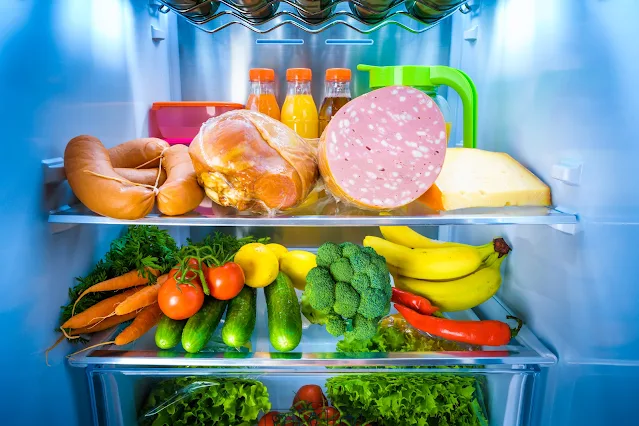In households across the United States, the question of how raw meats should be shelved prior to cooking is a common concern. Ensuring proper storage is crucial for maintaining freshness and plays a pivotal role in food safety. In this comprehensive guide, we’ll delve into the best practices for raw meat storage, offering easy-to-follow tips that cater to everyone, from novice cooks to seasoned chefs.
Raw Meats Shelving: Why It Matters for Food Safety
When it comes to the safe storage of raw meats, following best practices for raw meat storage is key. From poultry to beef, each type of meat requires specific care to prevent contamination and ensure optimal taste and texture after cooking. Let’s explore the essential steps for raw meat shelving, so you can confidently prepare delicious and safe meals for your family.
Understanding the Basics: How Should Raw Meats Be Shelved?
Raw meats, whether beef, chicken, pork, or seafood, should always be stored in the refrigerator or freezer to maintain their freshness and prevent the growth of harmful bacteria. Applying best practices for raw meat storage means keeping them separate from other foods to avoid cross-contamination. Place raw meats on a plate or tray on the bottom shelf of the refrigerator, ensuring any juices are contained and don’t drip onto other items.
The Importance of Temperature Control
One of the key factors in best practices for raw meat storage is maintaining the right temperature. The refrigerator should be set at or below 40°F (4°C) to slow down the growth of bacteria. For long-term storage, freezing is the best option. Ensure your freezer is set to 0°F (-18°C) or lower for optimal results.
Raw Meats Shelving by Type
Different types of meats require specific storage considerations. Let’s break down the guidelines for common meats:
Beef and Pork:
- Store in the coldest part of the refrigerator.
- Use or freeze within 1-2 days for ground meat and 3-5 days for whole cuts.
Poultry:
- Keep poultry in its original packaging or a sealed container.
- Use or freeze within 1-2 days for ground poultry and 1-2 days for whole birds.
Seafood:
- Refrigerate seafood immediately and use within 1-2 days.
- For longer storage, freeze seafood in airtight containers.
Safe Handling Practices
To further ensure food safety, adopt these best practices for raw meat storage:
- Use Separate Cutting Boards: Designate specific cutting boards for raw meats to prevent cross-contamination with fruits and vegetables.
- Hand Hygiene: Wash your hands thoroughly after handling raw meats to prevent the spread of bacteria.
- Thawing Tips: If you need to thaw frozen meat, do so in the refrigerator or microwave, avoiding leaving it at room temperature.
Proper Storage: A Culinary Necessity
As we dive deeper into the nuances of best practices for raw meat storage, it’s crucial to emphasize the impact of proper storage on the taste and quality of your dishes. Whether you’re planning a barbecue, roasting a chicken, or preparing a seafood feast, the way you store your raw meats can make a significant difference in the final culinary experience.
Choosing the Right Packaging
When purchasing raw meats, pay attention to the packaging. Opt for cuts that are tightly sealed to prevent exposure to air and potential contaminants. If the packaging is damaged or leaking, choose an alternative package to ensure the meat’s freshness. Proper packaging is an essential part of the best practices for raw meat storage.
Refrigeration Etiquette
The refrigerator is your ally in preserving the freshness of raw meats. Follow these tips for effective refrigeration:
- Organization Matters: Store raw meats on the bottom shelf to prevent any accidental drips onto other foods.
- Avoid Overcrowding: Ensure proper air circulation by not overcrowding the refrigerator, allowing cold air to circulate freely.
Freezing for Longevity
For extended storage, freezing raw meats is a game-changer. Here’s how to do it right:
- Secure Packaging: Use airtight containers or freezer bags to prevent freezer burn and maintain the meat’s quality.
- Labeling is Key: Clearly label each package with the date to keep track of storage time.
Mindful Thawing Techniques
When it comes time to use your frozen meats, adopt safe thawing practices:
- Refrigerator Thawing: Plan ahead and thaw meats in the refrigerator for a gradual, safe thawing process.
- Microwave Thawing: Use the microwave’s defrost setting for a quicker thaw, but cook immediately afterward.
Raw Meats Shelving Best Practices: A Recap
As we’ve explored the nuances of best practices for raw meat storage, it’s crucial to recap the key takeaways to ensure your culinary endeavors are both safe and delicious:
- Temperature Control: Maintain proper refrigerator and freezer temperatures for optimal meat storage.
- Separation is Key: Prevent cross-contamination by storing raw meats separately from other foods.
- Storage by Type: Understand specific storage needs for beef, pork, poultry, and seafood.
- Safe Handling: Implement safe handling practices to minimize the risk of foodborne illnesses.
- Packaging Matters: Choose tightly sealed and undamaged packaging when purchasing raw meats.
Conclusion
In conclusion, mastering the art of best practices for raw meat storage is an essential skill for any home cook. By following these guidelines, you’ll not only ensure the safety of your meals but also enhance the overall quality and flavor of your culinary creations. Remember, proper storage is the foundation of a successful and enjoyable cooking experience.
For more in-depth tips on food safety, visit FoodSafety.gov.
Explore delicious recipes and cooking techniques at America’s Test Kitchen.

